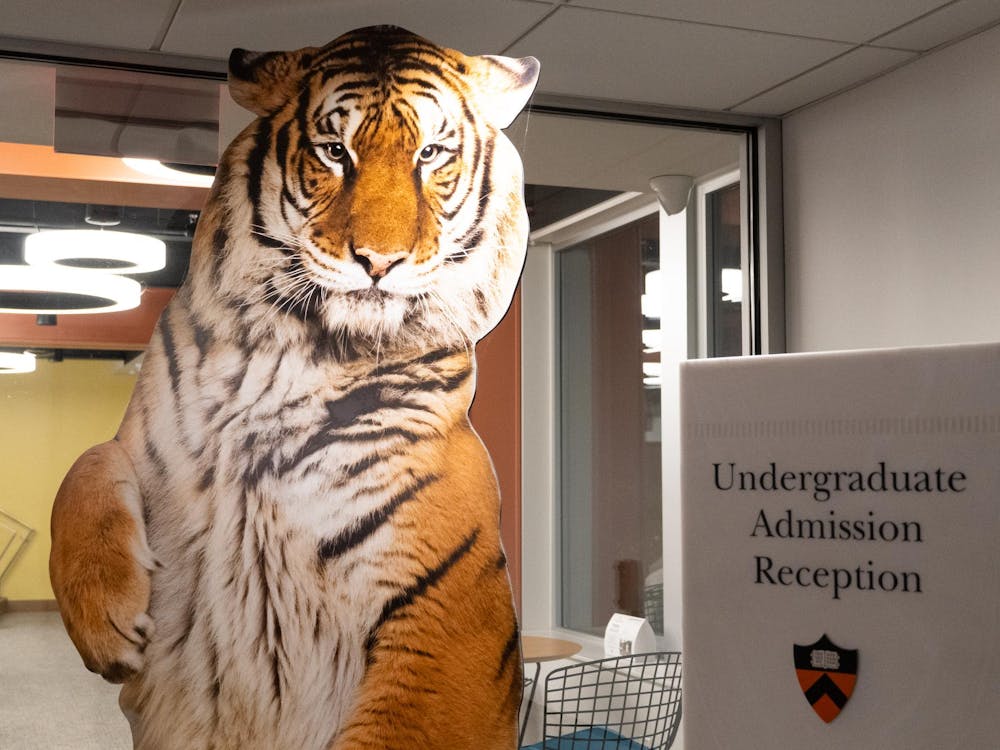If social life at Princeton isn't quite what you hoped for, or if you find yourself lacking connections even after four years in the Princeton Pre-Business Society, it's still too early to lapse into despair. There are, after all, always Reunions.
For Princeton's famously loyal alumni, nothing less than festivities unrivaled in magnitude and unbridled enthusiasm could suffice for class gatherings. By any account, this has been the character of reunions since their introduction to Princeton in the mid-19th century. In part for this reason, their ability to bring people together — sometimes for longer than anyone might expect — has always been remarkable.
"People have met at reunions and married a year later," proudly notes Adrienne Rubin '88, who works on the Alumni Council to help volunteers from past classes coordinate their reunions each year. According to Rubin, the cost of going to Reunions is often outweighed by its benefits. "People who haven't spoken for 20 years become friends [during reunions] and go into business together."
Rubin discovered the social potential of reunions relatively early, when she attended one as an undergraduate to perform with the Katzenjammers. She carried the banner for the Class of 1912 in the P-rade that year, marching alongside the oldest living Princeton alumnus, a graduate of that class.
Afterwards, Rubin began to receive four long letters from this gentleman each year. He always wrote in hopes that she would be able to carry the Class of 1912 banner on that year's Reunions, as tradition now dictated. He devoted himself to ensuring that spectators see the accomplishments of his class as represented on the banner. Before passing away, he walked in the Reunions P-rade with the Class of 1923 Cane — presented for use each year to the oldest living alum — seven times. This is a demonstration, Rubin said, that "people take a lot of pride" in returning to Princeton and truly view Reunions as a "celebration of the Princeton community."
William Selden '34 writes in his history of Reunions at Princeton, "Going Back," that alumni began returning to campus for commencement exercises in 1833. By 1897, this tradition had evolved to the point where Reunions had become annual events in their own right. Princeton is unique in the sense that it welcomes back every year the members of every class for Reunions. At the same time, however, most of the preparations for Reunions are undertaken by those classes celebrating a so-called "major" reunion, which occur only every five years.
Competition naturally arose among the classes early on, establishing the basis for elaborate spectacles that returning Princetonians have come to expect. The Class of 1894 was so eager to attract its members back to campus for its reunions at 19 University Place that, in 1912, it founded the "Society of the Claw." Class members who promised to appear regularly at Reunions were inducted into the society and issued tiger claws imported by Princeton missionaries returning from India. The society later purchased bronze stars to mark the dormitory rooms of those students who had died serving in World War I.
Parades have long been central to Reunions at Princeton, although Sheldon notes that the unique "P-rade" designation came into use a bit later, in 1906. Records seem to indicate that this is a shortening of "Pee-rade", a name with all too obvious origins. P-rades, on the one hand, are a very lighthearted affair. They lend an excellent opportunity for each class to showcase its elaborate, themed costumes. To the delight of many, the Class of 1985 last year adopted "Tails of the Arabian Nights" as its theme, for example.
Yet the parades are also a powerful display of class unity. Rubin has been told by many graduating seniors that they "feel like alumni not when they graduate, but when they step into the P-rade" with all the Princeton classes preceding their own.

Reunions have, of course, evolved over the years. In particular, Rubin notes that, whereas the weekend formerly was a prolonged "beer-bash," there is now less of an emphasis on drinking. "The character has changed over time from a big party to a big celebration — and there really is a difference," she observed.
Kathy Taylor '74, also of the Alumni Council, finds that Reunions are becoming an increasingly more "enormous undertaking" as alumni flock to campus in unprecedented numbers. She points to the 50 percent attendance rate of most classes for their first and second reunions, and notes that well more than 15,000 people descend upon campus for the weekend. Rubin and Taylor agreed, however, that any amount of work invested in Reunions is well spent, if only because of the togetherness it enables. "The real thing I love," Rubin said, "is just watching people run across a courtyard to give someone a hug."







